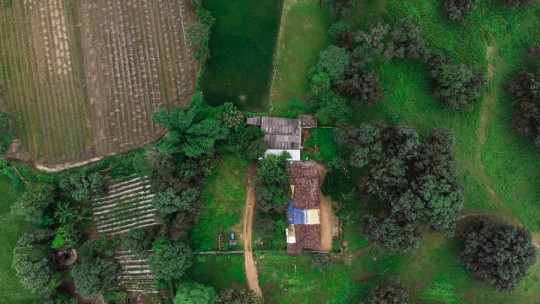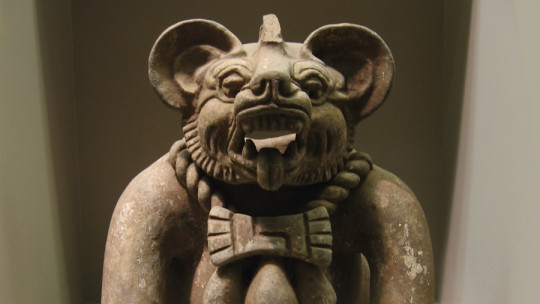Slavery was an economic system in which forced labor was used as a mode of production , that is, the slaves. This system, although it is believed to be extinct today, was very common in many cultures and, in fact, was the basis for them to function.
Below we will see how it originated, what it consists of, how slaves lived and were traded, in addition to talking about the decline of this system and if it still exists today.
What is slavery?
Slavery, also called slave mode of production, is the system of economic production whose fundamental pillar is unpaid labor, that is, slaves.
These people were men, women and children, who were forced them to work, receiving only enough to survive in return , and without having guarantees that they would live long term. Their legal status was that of their master’s property, like someone who has goats and cows on the farm, and they could be purchased like any object.
Although today it may seem like an unfair and oppressive system, which it is, throughout history slavery has been the fundamental pillar of all types of cultures. Civilizations such as, for example, ancient Rome, Greece and Egypt, pre-Columbian cultures such as the Inca and the Mayan, and also Muslim countries were based, at some point in their history, on a slave production system.
origins
The origins of slavery can be found in prehistory being considered one of the first economic systems of humanity.
When prehistoric humans developed agriculture, around 10,000 BC, primitive communities changed, ceasing to be nomadic and beginning to build sedentary towns. These towns exploited the nearby land and, as they had more food, they increased their population at the same time that they were disintegrating and forming new towns.
Although the idea of private property was very uncommon among ancient hunter-gatherers, when moving to agronomic cultures the idea of individual property began to clearly form. The farmers had their lands, their crops and their animals. With the arrival of agriculture, basically, we went from a culture in which hunting and gathering was shared to one in which each individual or family was responsible for their production and having the right to consume what they had produced.
These communities, whether due to territorial disputes or the need to obtain more goods, ended up making wars among themselves. As a result of these conflicts, the losing villages were looted and their survivors taken prisoner These prisoners ended up working on the lands of the victorious tribes, forcing them to be the labor force under the threat of death or torture. In this way the first slaves in history were obtained.
However, the great slave systems went hand in hand with great civilizations such as Egypt, Greece and Rome. In fact, the slave mode of production was the essential component in the economic and social formation of classical Mediterranean civilizations, shaping them as we know them today. Slavery in Greece and Rome was carried out massively almost comparable to how goods are manufactured in modern industrial societies.
How did the slave live?
Slaves were non-salaried workers, devoid of any rights, treated like animals or, simply, as objects. The vast majority of them lived in inhumane conditions.
They could not have any type of property, since they were property in themselves. Furthermore, they could not express their opinion or complain about how they were treated. Living was not a right for them either, since it was the master who decided whether he wanted his property to live or not, and killing them did not imply any type of remorse. If a slave became pregnant, the baby could be sold on the slave market That is, they could not form a family on their own, since having children was the master’s decision.
The few things they had, such as rags to wear, poor food, and poor housing, were things that their masters had allowed them to have. In order to continue having these things they were forced to work day and night, having just enough to survive and without being able to go anywhere freely.
As property, if a free person killed a master’s slave he had to compensate him with the corresponding value, but he did not receive the same legal consequences that he would have received if he had killed a free citizen. In the eyes of the legality of the different states that have been based on slavery, Killing a slave is not the same as killing a person considered “normal”
Although the master had the last word on his life, there have been cases of slaves who have obtained freedom, but not before paying a significant price for it. If the master allowed it, his slave could gain the status of free man , that is, freedman, but he had to pay the price to compensate for his master losing him as labor. Paying compensation equal to the value of their freedom was extremely expensive, especially considering that slaves typically did not earn any wages.
How were slaves traded?
Slaves were usually people who had been free at some point in their lives but had been deprived of their freedom. It could also be the case that they had been born into a family of slaves and had inherited this condition.
The way slaves were obtained throughout history has followed the same patterns. In most cases, slaves were slaves because, After a war, one town had won over the other and the survivors were taken prisoner and forced to work On other occasions, as was the case with the European colonization of Africa and America, there was an important business behind slavery.
The Europeans went to Africa to catch black people off guard, they chained them, put them on a ship and took them either to Europe or to the American colonies. The conditions in which they traveled were inhumane and many of them died during the journey. However, and despite the fact that the slavers lost merchandise, it seemed little that they could care given that, In the eyes of European slavers, Africa was a very rich continent in this merchandise
Upon arriving at port, the slaves were auctioned in public squares. This was not exclusive to Europe after the discovery of America, since selling slaves in the food market was also a well-established practice among the Romans. There, the buyers, owners of large estates and workshops, selected the individuals who seemed strongest and healthiest to them.
Decline of slavery
Actually, slavery has had its ups and downs throughout history and, in fact, there have been periods in which it was prohibited followed by times in which the slave production system was an imperative necessity.
In the West we have the first decline of slavery after the fall of the Roman Empire Already before, the expansion of Christianity and the creation of the Catholic Church had brought about great changes in the mentality of the Romans, who had once seen slavery as something extremely necessary for society to continue functioning.
Christianity encouraged reforms in Roman law, making the idea of slavery seen as something totally contrary to God’s designs. This is why with the arrival of the Middle Ages, slavery was apparently abolished. However, far from being eradicated, this is transformed into a new system of oppression, characteristic of feudalism: serfdom.
The peasants who had practically nothing to live on went to the lands of the feudal lords to be able to live on them in exchange for working and paying taxes. The feudal lord, as long as he was the owner of the land, was also the one who could demand that his new tenants offer him all kinds of services.
The conditions of the serfs were subhuman, like those of the slaves. However, despite not being free people, they had certain rights recognized, such as being able to marry, the right to life as long as they did not commit crimes, in addition to being able to exploit and store part of the fruits of their work. These were, therefore, people who were halfway between slaves, seen as objects, and fully free citizens.
Once the Middle Ages had been overcome with the (re)discovery of America, slavery re-emerged in Europe, with more strength and brutality than ever. Several countries, such as Spain, Portugal, France and, in a particularly cruel and heartless way, England, developed the entire slave system characteristic of the slave trade. In fact, It was this slave trade that laid the foundations for the ethnic configuration of several American countries such as the United States, Cuba, Dominican Republic, Haiti and Brazil.
The definitive decline of slavery would begin to occur in the 18th century and, in the 19th century, this practice would be completely abolished in the West or, at least, legally. The reason that Europeans and American colonists chose to recognize that slaves were human beings and had the right to be free was thanks to the French Enlightenment, which would lay the foundations for the bourgeois revolutions These revolutions would initiate a whole series of changes in terms of gaining human rights, which would be consolidated in modern human rights.
It should also be said that slavery continued to be practiced after being abolished, especially in war situations. In Europe, during World War II, Germany used its concentration camp prisoners as slaves, while the Soviet Union did so with its prisoners in the “gulags.” The United States was not a great example either, since it used Japanese prisoners in the same way it had blacks just a century earlier.
Current status of slavery
Today, no country in the world would call itself a state with a slave production system. There are international treaties openly against slavery and there is even anti-slavery day, established on December 2 of each year as the International Day for the Abolition of Slavery.
Despite all this, there are many countries in which the lowest levels of society are exploited in an inhumane manner. Child slave labor in various textile companies, mass production in Asia, sexual exploitation and human trafficking They are modern businesses that combine characteristics of a slave production system.
So, even though it is no longer legal to deprive someone of their freedom, it is still done today, at least on the black market. With all this, in the same way that the West clearly and decisively abolished slavery, we can only hope that it can be eradicated at all levels in all societies on the planet.









